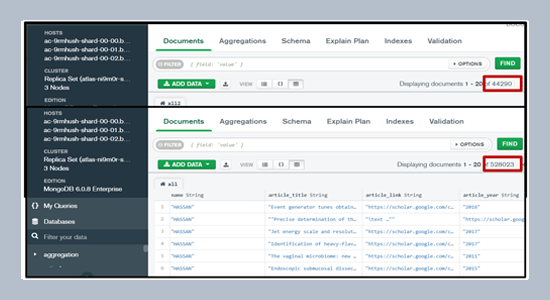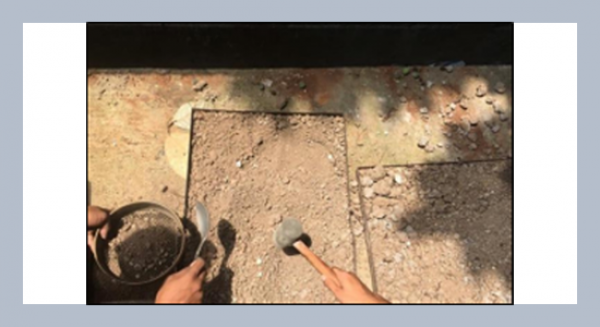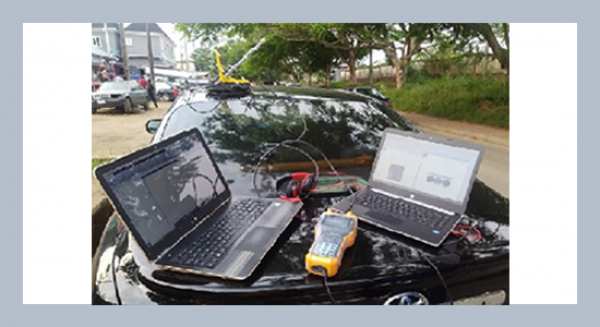REFERENCES
- Abdullah, D.B., 2020. Network-based bibliometric method for analyzing collaboration and publishing tendencies. In 6th International Engineering Conference Sustainable Technology and Development (IEC), 174–178.
- Al Husaeni, D.F., Nandiyanto, A.B.D. 2022. Bibliometric using vosviewer with publish or perish (using Google Scholar data): From step-by-step processing for users to the practical examples in the analysis of digital learning articles in pre and post Covid-19 pandemic. ASEAN Journal of Science and Engineering, 2, 19–46.
- Ali, M., Jung, L.T., Sodhro, A.H., Laghari, A.A., Belhaouari, S.B., Gillani, Z. 2023. A Confidentiality-based data Classification-as-a-Service (C2aaS) for cloud security. Alexandria Engineering Journal, 64, 749–760.
- Azhar, R.J.K., Nurhakim, L., Putra, R.E. 2019. Implementasi web scraping untuk menampilkan informasi tayangan film di bioskop: Book my show. Universitas Siliwangi, 1, 1–7.
- Buyya, R., Calheiros, R.N., Dastjerdi, A.V. (Eds.). 2016. Big data: Principles and paradigms. Morgan Kaufmann, USA.
- Dabdawb, M., Mahmood, B. 2021. On the relations among object-oriented software metrics: A network-based approach. International Journal of Computing and Digital Systems, 1, 901–915.
- Delgado López-Cózar, E., Orduña-Malea, E., Martín-Martín, A. 2019. Google Scholar as a data source for research assessment. In: Glänzel, W., Moed, H.F., Schmoch, U., Thelwall, M. (eds) Springer Handbook of Science and Technology Indicators, 95–127.
- Divakarmurthy, P., Menezes, R. 2013. The effect of citations to collaboration networks. Complex Networks, 424, 177–185.
- Fronczak, A., Hołyst, J.A., Jedynak, M., Sienkiewicz, J. 2002. Higher order clustering coefficients in Barabási–Albert networks. Physica A: Statistical Mechanics and Its Applications, 316, 688–694.
- Fujita, M., Inoue, H., Terano, T. 2021. Analyzing promising researchers using network centralities of co-authorship networks from academic literature. New Generation Computing, 39, 181–197.
- Hammadi, D.S., Mahmood, B., Dabdawb, M.M. 2021. Approaches on modelling genes interactions: A review. Technium BioChemMed, 2, 38–52.
- Jaiswal, A., Dwivedi, V.K., Yadav, O.P. 2020. Big data and its analyzing tools: A perspective. In 6th International Conference on Advanced Computing and Communication Systems (ICACCS 2020), 560–565.
- Laghari, A.A., He, H., Khan, A., Kumar, N., Kharel, R. 2018. Quality of experience framework for cloud computing (QoC). IEEE Access, 6, 64876–64890.
- Laghari, A.A., He, H., Khan, A., Laghari, R.A., Yin, S., Wang, J. 2022. Crowdsourcing platform for QoE evaluation for cloud multimedia services. Computer Science and Information Systems, 19, 1305–1328.
- Laghari, A.A., Jumani, A.K., Laghari, R.A. 2021. Review and state of art of fog computing. Archives of Computational Methods in Engineering, 28, 1–13.
- Lula, P., Dospinescu, O., Homocianu, D., Sireteanu, N.A. 2020. An advanced analysis of cloud computing concepts based on the computer science ontology. Computers, Materials and Continua, 66, 2425–2443.
- Mahmood, B., Menezes, R. 2013. United states congress relations according to liberal and conservative newspapers. In 2013 IEEE 2nd Network Science Workshop (NSW), 98–101.
- Martín-Martín, A., Orduna-Malea, E., Delgado López-Cózar, E. 2018. A novel method for depicting academic disciplines through Google Scholar Citations: The case of bibliometrics. Scientometrics, 114, 1251–1273.
- Mohammed, A.J., Hasan, T.M., Mahmood, B. 2020. Citation networks Iraqi universities case study. In 2020 3rd International Conference on Engineering Technology and its Applications (IICETA), 41–46.
- Orduna-Malea, E., Ayllón, J.M., Martín-Martín, A., Delgado López-Cózar, E. 2015. Methods for estimating the size of Google Scholar. Scientometrics, 104, 931–949.
- Osipov, D. 2019. Development of a MongoDB-connected VR application. [Bachelor’s thesis, TURKU University of Applied Sciences].
- Ramirez-Gallego, S., Mourino-Talin, H., Martinez-Rego, D., Bolon-Canedo, V., Benitez, J.M., Alonso-Betanzos, A., Herrera, F. 2018. An information theory-based feature selection framework for big data under Apache spark. IEEE Transactions on Systems, Man, and Cybernetics: Systems, 48, 1441–1453.
- Shaikh, Z.A., Khan, A.A., Teng, L., Wagan, A.A., Laghari, A.A. 2022. BIoMT modular infrastructure: The recent challenges, issues, and limitations in blockchain hyperledger-enabled e-healthcare application. Wireless Communications and Mobile Computing, 2022, 1–14.
- Sivarajah, U., Kamal, M.M., Irani, Z., Weerakkody, V. 2017. Critical analysis of big data challenges and analytical methods. Journal of Business Research, 70, 263–286.
- Sultan, N.A., Mahmood, B., Thanoon, K.H., Khadhim, D.S. 2020. Network centralities-based approach for evaluating interdisciplinary collaboration. In 6th International Engineering Conference "Sustainable Technology and Development"(IEC), 216–221.
- Sun, Y., Yin, S., Li, H., Teng, L., Karim, S. 2019. GPOGC: Gaussian pigeon-oriented graph clustering algorithm for social networks cluster. IEEE Access, 7, 99254–99262.
- Tomasini, M., Menezes, R. 2015. Estimating memory requirements in wireless sensor networks using social tie strengths. In IEEE 40th Local Computer Networks Conference Workshops, 695–698.
- Yu, J., Li, H., Liu, D. 2020. Modified immune evolutionary algorithm for medical data clustering and feature extraction under cloud computing environment. Journal of Healthcare Engineering, 2020, 1–12.















